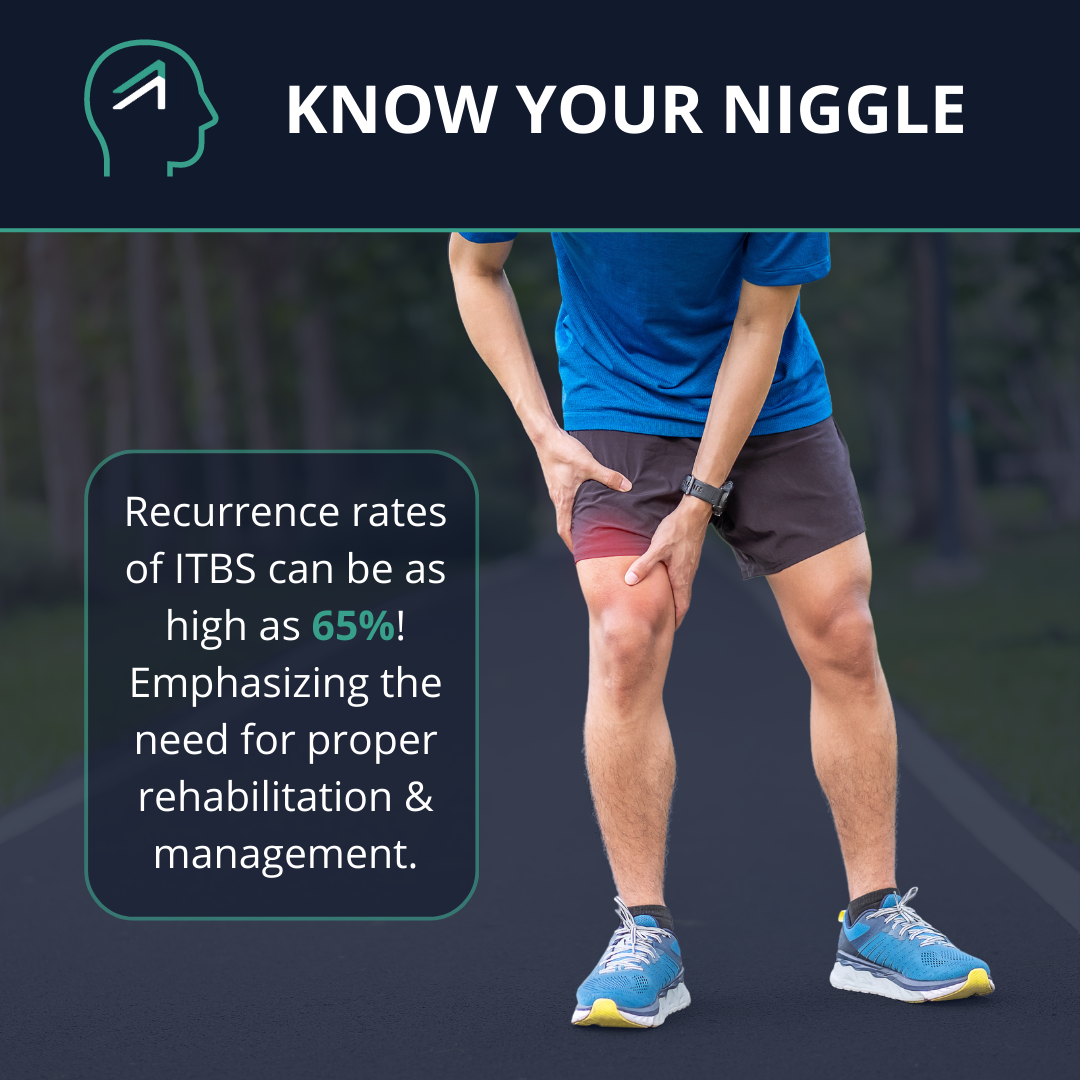Decoding Iliotibial Band Syndrome: Understanding the Runner's Nemesis

Welcome, fellow runners and fitness enthusiasts! Today, we embark on a journey to unravel the mysteries of a common running injury called Iliotibial Band Syndrome (ITBS). If you've ever experienced pain on the outside of your knee while running, you might be familiar with this pesky condition. Fear not! In this comprehensive blog post, we will delve into the secrets behind ITBS, exploring its causes, symptoms, and, most importantly, equipping you with effective strategies to prevent and treat it. So, lace up your shoes, and let's dive in!
Recognizing ITB Syndrome:
One of the primary indications of ITBS is pain on the outside of your knee joint. This discomfort usually occurs when the iliotibial band, a thick band of tissue running down the outside of your leg, rubs against the bony prominence of your knee. Activities involving repetitive movements like running, squatting, or jumping can worsen the pain. If you experience pain in this area, especially during these activities, there's a chance you may be dealing with ITBS.
Understanding ITBS:
To effectively manage and overcome ITBS, it is crucial to comprehend its underlying causes. In simple terms, ITBS occurs when the iliotibial band becomes irritated and inflamed, leading to swelling and pain along the outside of your knee. The iliotibial band acts as a stabilizing structure, supporting your knee joint during movement. However, when it becomes overworked or strained, trouble can arise. Common factors contributing to ITBS include:
- Overtraining: Pushing yourself too hard and too quickly without allowing your body enough time to recover can lead to ITBS. This can include increasing your mileage or intensity too rapidly without proper conditioning.
- Improper biomechanics: Issues, such as running with poor form can put extra stress on the iliotibial band. Overpronation (excessive inward rolling of the foot) or running on uneven surfaces like cambered roads or uneven trails can overstress the ITB, without proper muscle strengthening.
- Muscle weaknesses: Weakness in certain muscles, particularly the hip abductor muscles (such as the glutes), can contribute to ITBS. These muscles play a crucial role in stabilizing the hip and knee during movement. If your glutes are weak, it can cause excessive stress on the iliotibial band during running or other activities.
Identifying Risk Factors:
ITBS can affect anyone leading an active lifestyle, not just runners. Several factors can increase your chances of developing this condition. These risk factors include:
- Frequently engaging in activities that involve prolonged running or jumping.
- Training intensively without allowing your body time to rest and adapt.
- Wearing improper footwear.
- Running on uneven surfaces like hills or banked terrains.
- Having structural issues like bow legs or leg length discrepancy.
- Possessing weak or imbalanced hip and leg muscles.
Being aware of these risk factors can help you take preventive measures to avoid ITBS.
Managing ITBS:
To recover or prevent ITBS requires a comprehensive approach, the following strategies can be helpful
- Eccentric training: Perform eccentric exercises targeting the hip and knee muscles to strengthen and stabilize the IT band. This involves controlled lengthening of the muscles while under tension, such as eccentric squats or eccentric step-downs.These exercises encourage the production of key proteins that strengthens and repairs the tendon. This process can help to improve the overall integrity of the IT band, reducing the risk of injury and aiding in the healing process.
- Rest and activity modification: Reduce or temporarily avoid activities that aggravate ITBS, such as running on uneven surfaces or downhill. Allow sufficient time for rest and recovery to reduce inflammation and promote healing.
- Physical exercise: Seek guidance from a physical therapist, or engage in Zlaants specialised ITBS routine that provides specific exercises to improve flexibility, strengthen muscles, and correct biomechanical imbalances contributing to ITBS.
- Foam rolling and self-myofascial release: Use a foam roller or Zlaants “Zhark” and “Zorb” massage tools to apply pressure and release tension in the IT band and surrounding muscles. This can help alleviate tightness and improve tissue mobility.
- Proper footwear and orthotics: Ensure you have appropriate running shoes that provide adequate support and cushioning. In some cases, custom orthotics or shoe inserts may be recommended to correct foot mechanics and reduce strain on the IT band.
Understanding and managing ITBS is crucial for runners and athletes striving for an active and pain-free lifestyle. By recognizing the symptoms, addressing risk factors, and implementing effective recovery and prevention strategies, you can overcome this challenging condition and continue doing what you love, stronger and more resilient than before. Remember, patience, consistency, and a focus on quality movement are key elements of your journey toward a successful recovery.
So, lace up your shoes, fire up the Zlaant app, and let's "get back out there" to embrace the joy of movement once again. Happy running!
Note: This blog post is for informational purposes only and does not replace medical advice. If you're experiencing persistent or severe pain, consult with a qualified healthcare professional.
